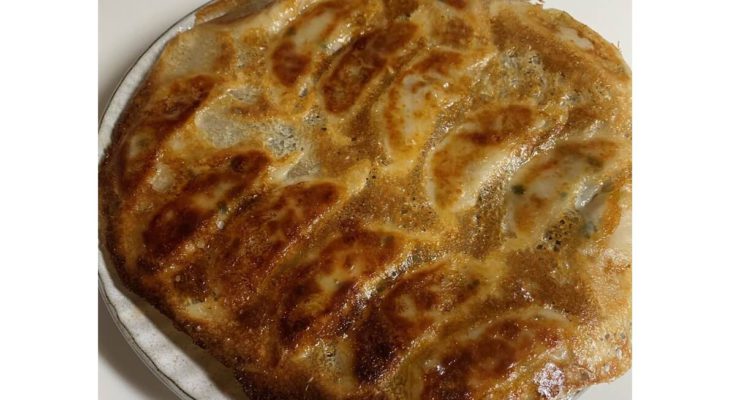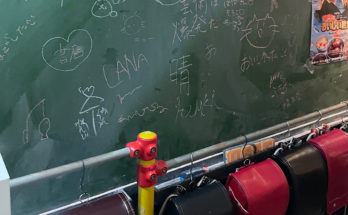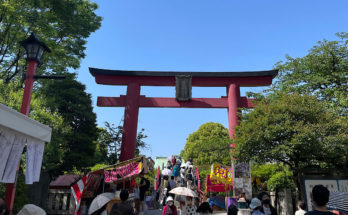Welcome to an authentic gyoza world! Today, let me talk about Japanese dumplings, known as gyoza.
History
Is gyoza a Chinese food? To answer this question, let’s turn the pages of the history of gyoza.
It is said that dumpling-like food was eaten around 3000 B.C. in China. The food, whose ingredients were wrapped with a shell made from flour, was found in the ruins of Ancient Mesopotamia. How about in Japan? Gyoza dates back to the Edo era. It is said that in 1689, Mitsukuni Tokugawa, who is known as Mito Komon, ate gyoza for the first time in Japan. At that time, they used wild duck meat for filling, and steamed gyoza and boiled gyoza were common. Nowadays, fried gyoza with minced pork is popular in Japan. In my opinion, though dumplings are originally from China, we made something we can call our own to suit the Japanese palate – that is gyoza.
Battle
Jumping ahead to modern day, did you know there’s been a conflict about gyoza between two cities in Japan? That is a battle over the consumption of gyoza between Utsunomiya and Hamamatsu. Utsunomiya is the capital of Tochigi, which is in the northern part of the Kanto area. Hamamatsu is a city in Shizuoka, which is in the center of Japan. In 2017, the city that consumed the most gyoza per family was Utsunomiya, in 2018-Hamamatsu, in 2019-Utsunomiya again, and last year, in 2020, Hamamatsu won again. This must be a trivial issue for people living in other prefectures, but thinking about both prefectures’ tourism, it is a big story every year.
Is there a difference between the gyozas of each prefecture? The answer is “Yes!” In Hamamatsu, a lot of vegetables like cabbage, onion and pork are wrapped with a thin shell. It is usually served with boiled bean sprouts. On the other hand, the shell is thicker in Utsunomiya. They use Chinese cabbage, pork, and the important thing to remember, Chinese chives. It is because this area is famous for its production of Chinese chives.

Utsunomiya gyoza
To be honest, I’m from a small city in Tochigi, so let me share more about gyoza culture in Utsunomiya.
First of all, you’d be surprised to see a statue of gyoza in front of Utsunomiya Station. Not the Statue of Liberty, but this Venus might be shedding light on the gyoza lovers there.

In Utsunomiya, there’re plenty of gyoza specialty restaurants left and right.
On the menu, there are only gyoza, and rice, if any, in most cases. When you order, all you have to do is to say fried or boiled and how many. I definitely recommend fried ones. Imagine the golden brown crispy shell and juicy filling with a lot of meat and vegetables.
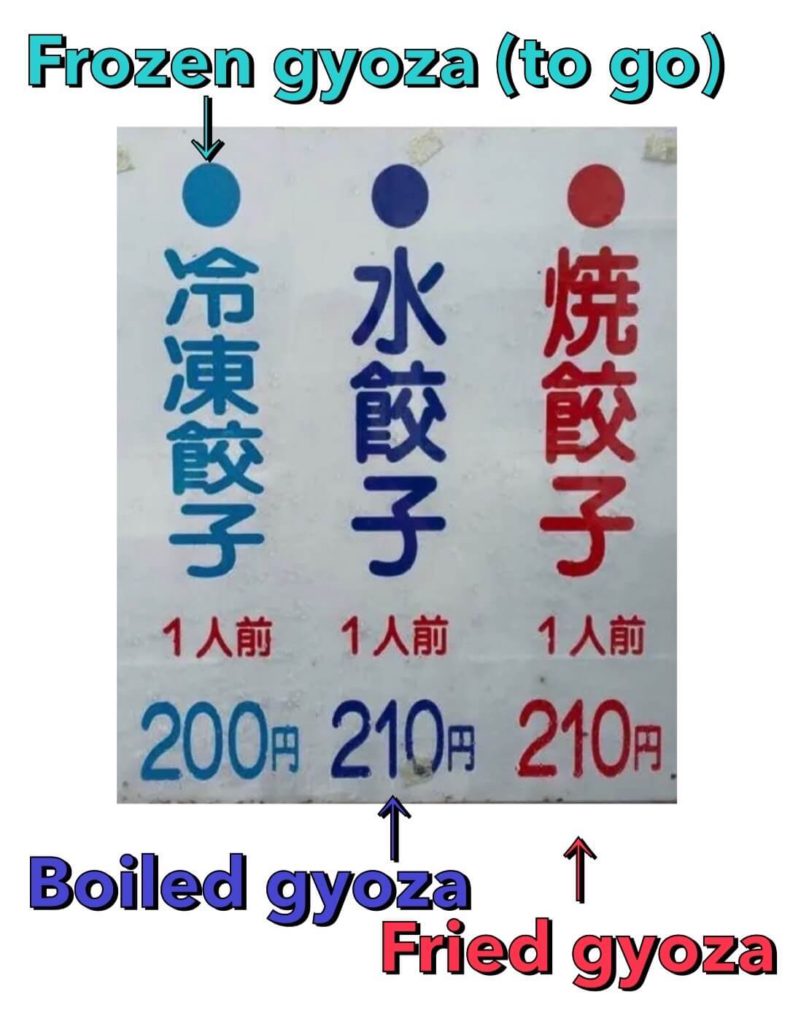
※Now the price has changed.(Frozen-220yen, Boiled&Fried-250yen)
Now how many should we order?
Let me share a story from my childhood. My dad and I went to a gyoza restaurant before seeing a musical. I vividly remember he ordered seven for just the two of us. There are usually six pieces per order, so we ended up eating 42 gyoza before the great show. I love watching musicals, but what I remember is the fact that we enjoyed a lot of gyoza on a big plate. Not to mention, we ate only gyoza without rice or noodles.

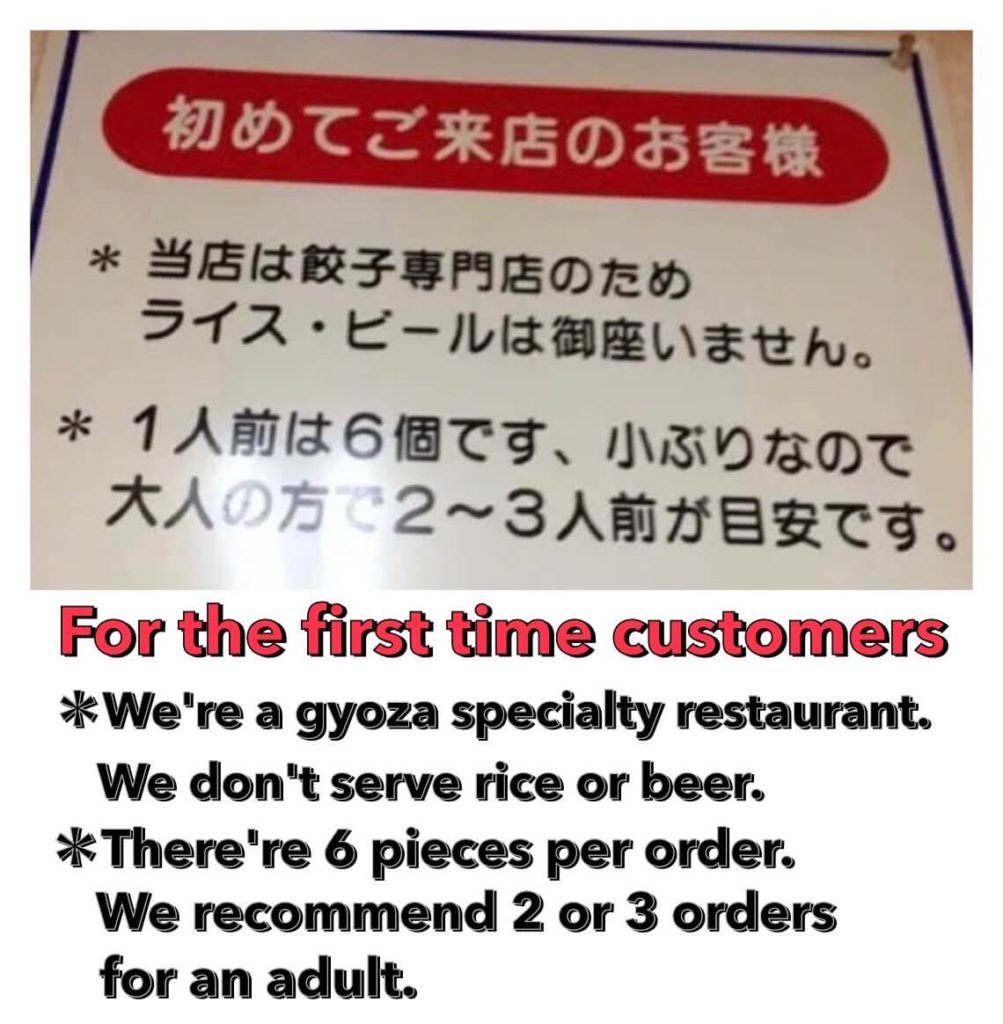
Another story is way back when I got married to my husband. He’s not from Tochigi. I made gyoza from scratch with a lot of love. I served them on a big plate like the one I ate before the musical when I was a kid. I had no doubt that his face would be filled with happiness. However, when he saw them, his face froze and he said, “What? What’s this?” I answered, “Of course, gyoza!” and he said, “I know, but we are only two, who on earth eats such an amount of gyoza?” From this experience, I learned that gyoza isn’t a main dish for many people in Japan.
A message from one of the gyoza lovers
This is just a part of gyoza’s story in Japan. I believe gyoza is one of the cheap and wonderful Japanese foods. I hope my blog made your mouth water. If you have a chance to visit Japan, don’t miss enjoying the delicious authentic gyoza!
Thanks for reading my blog!
餃子像 – Wikipedia
https://ja.wikipedia.org/wiki/餃子
ぎょうざ専門店 正嗣|店舗情報 (ucatv.ne.jp)
https://www.ucatv.ne.jp/ishop/masashi/shop.html
Working for an English language school. My source of energy is our students’ smiles full of curiosity. I love visiting my friends in and outside of Japan.

